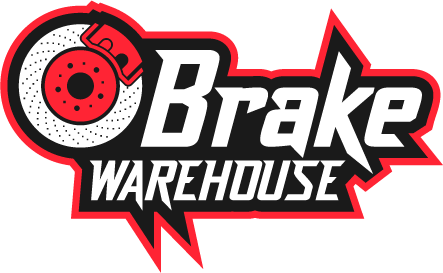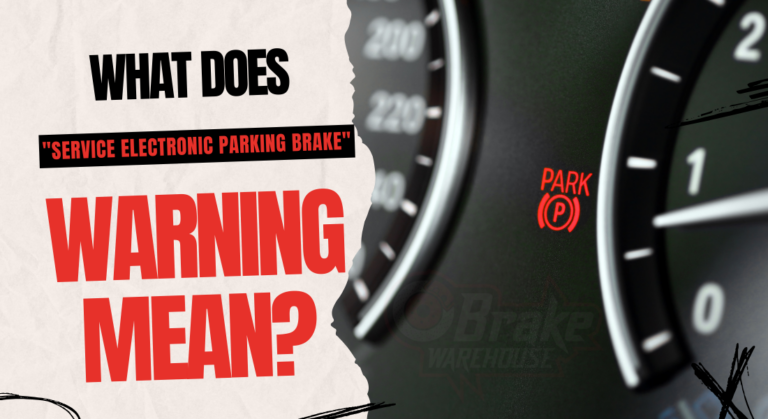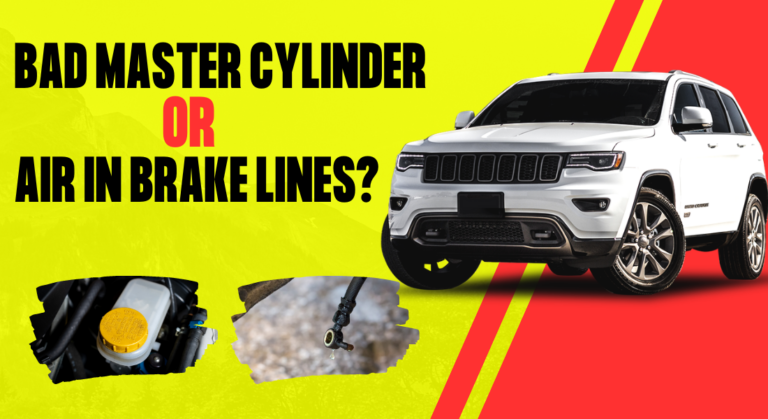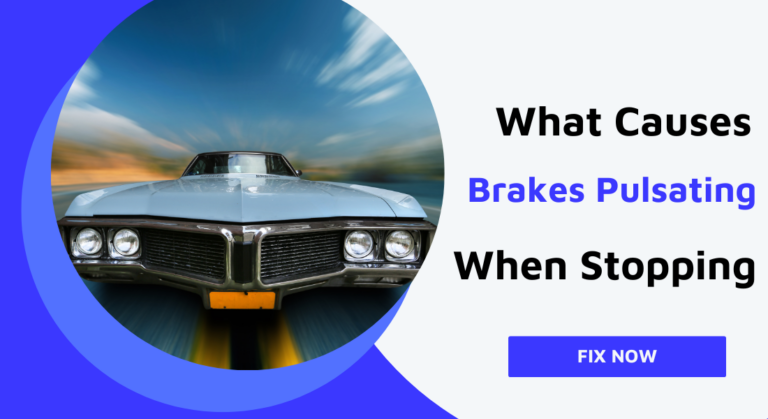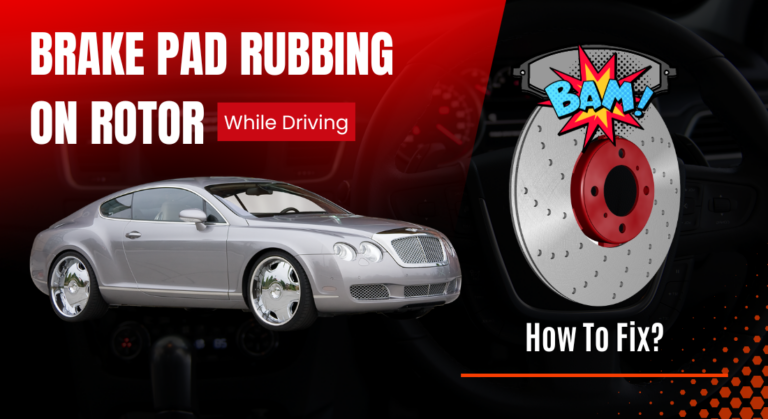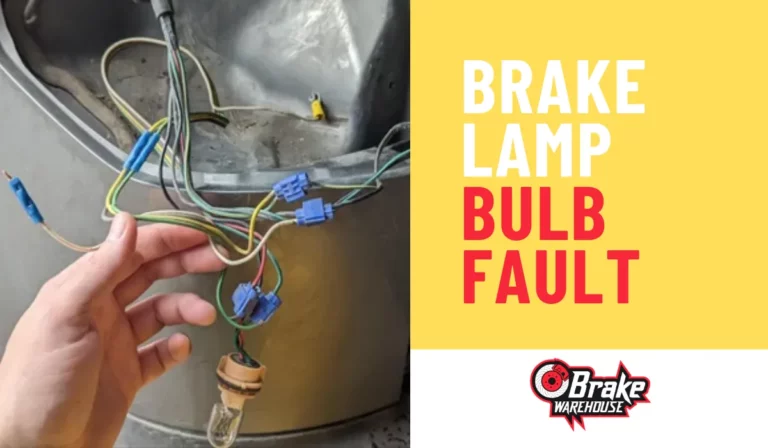No Brake Pressure When Car Is Running – How To Fix?
Brakes are one of the many parts you must ensure they operate properly before pressing the accelerator. Most of the time, brake issues are detectable when the car is off.
However, some issues manifest when the engine comes on. One is when there is no brake pressure when the car is running. Why does it happen, and how do you fix it? Read on to find out.

What Causes No Brake Pressure When Car Is Running?
No brake pressure when the car runs might not be a common issue, but it does happen. If you’re experiencing it, here are possible causes:
- Your car has a brake fluid leak
- There is air in the brake system
- You’re experiencing a pressure leak
- Your ABS is failing or faulty
How do all these issues happen? Here is how to troubleshoot and fix each of these issues.
Your Car Has A Brake Fluid Leak
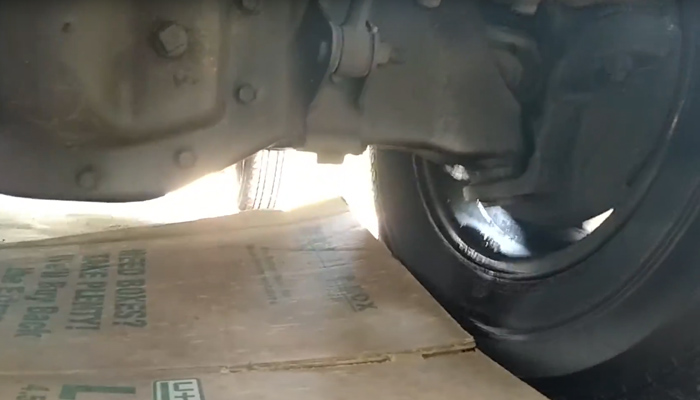
When the engine turns on, the brake booster also comes on. This means you have boosted pressure when you press on the brake pedal. Sometimes, worn-out seals or hoses may have small leaks that might not manifest when the engine is off. However, when the booster comes on, these worn-out components may expand, causing fluid to leak.
Solution:
You need to find the leak and fix it. You will also need to replace the leaking parts in the brake line.
- Start the engine and allow it to run for a couple of minutes.
- Press the brake pedal a couple of times and start inspecting the source of the leak (seals, hoses, etc.)
- Once you locate the leak, determine the component causing it.
- Carefully examine the brake lines, hoses, calipers, and wheel cylinders.
- Typically, look for visible fluid drips or puddles near the wheels. It is usually a clear or slightly yellowish liquid.
- Look for wet or oily areas, especially near the wheels.
- Replace or repair the worn-out components or repair them if workable.
- Ensure you use high-quality replacement parts.
- After repairing or replacing the components, refill the brake fluid reservoir. Use the recommended brake fluid that meets the required standards (our recommendation.)
- Bleed the brake system if air has entered during the repair process.
Here is a video showing how to bleed your brake fluid:
There Is A Brake Pressure Leak
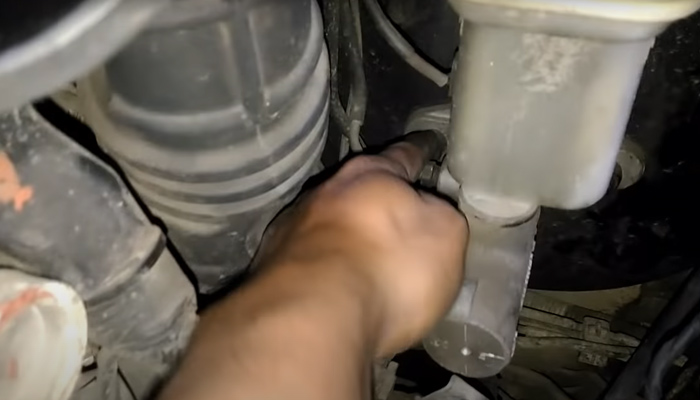
Another possible reason for no brake pressure when the car is running is that you have a pressure leak. Typically, the brake fluid is measured to fill all the lines in the brake system. Even a small volume increase can change the pressure you get when you press the brake pedal.
What happens is the worn-out and weak hoses may expand when the brake booster starts running. This would create an uncatered-of volume that would reduce pressure, especially if you’re low on brake fluid.
The same could happen if the brake shoes are worn out. That means when you press the brake pedal, the fluid will fill the wheel cylinder completely as the brake shoes try to create enough contact. That would create a spongy braking feel.
Solution:
Inspect the brake line for swollen hoses and replace them. You will also need to inspect the brake shoes for excessive wear.
- Start the engine and press the brake pedal several times to create enough pressure.
- Find a way to keep the pedal pressed and follow the brake line from the master cylinder down to the wheels checking.
- What you’re looking for is a swollen hose. If you find any, replace it as it might even burst soon.
- Move to the wheels and take the wheel out to access the brake shoes. Check how they are and replace them if they are too far gone.
- Refill the brake fluid, as the pressure leak will usually manifest when it is low.
You may need to bleed the brake fluid line if you suspect there is air in it, as that will also cause pressure loss.
Read Also: No Brake Pressure After Changing Calipers: Why & How To Fix?
There Is Air In The Brake System
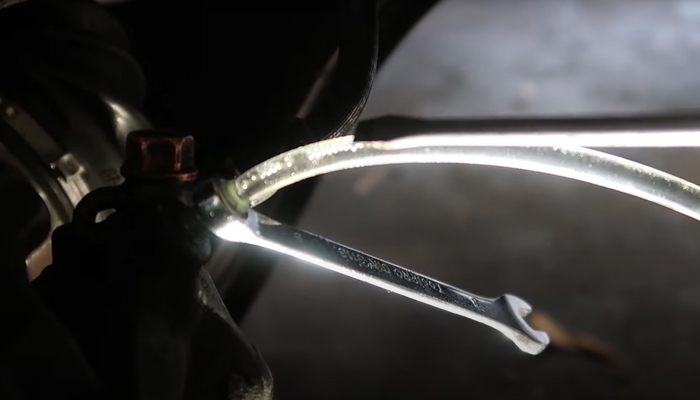
Air in the brake system can also lead to a loss of brake pressure when the car is running. Air bubbles can enter the system in a variety of ways. It could be a leak, or it entered when you were replacing the brake fluid. When air is present in the brake lines, it compresses under pressure, resulting in a spongy or soft brake pedal feel.
Solution:
Check to ensure the brake fluid level is optimal. If the fluid level is at the max level, you will need to bleed the brake system to get rid of the air and refill properly.
- If it is low, it may indicate a leak. Check for leaks by looking for any wetness around the brake fluid line.
- If you can’t find any leak, there is a possibility insufficient fluid allowed air in the system. Refill the reservoir with the recommended brake fluid type.
- Locate the brake bleeder valves on each brake caliper or wheel cylinder. These valves are usually at the highest point in the brake system and have a small fitting you need to open to release the trapped air.
- Have an assistant help you with the bleeding process. Start with the brake farthest from the master cylinder and work toward the closest one.
- Place a clear plastic tube over the brake bleeder valve.
- Partially fill a container with brake fluid and immerse the other end of the. This container will prevent air from being drawn back into the system.
- With the engine running, ask your assistant to slowly press the brake pedal and hold it down. Open the bleeder valve briefly to release any air and fluid.
- As the valve is opened, you should see air bubbles escaping through the clear plastic tube. Close the valve before your assistant releases the brake pedal.
- Repeat the process of pressing the brake pedal, opening the bleeder valve, and closing it. Do this until you observe a steady stream of brake fluid without air bubbles.
- Remember to check the brake fluid reservoir regularly during this process. Refill it as necessary to avoid introducing more air into the system.
- Move on to the next wheel and repeat the bleeding procedure until all four wheels have been bled.
- Once you have completed the bleeding process, check the brake pedal for a firm feel. If it still feels spongy or air remains in the system, repeat the bleeding process.
- After bleeding all the brakes, check for leaks and ensure all connections are secure. Replace any damaged components or hoses that may have contributed to the air entering the system.
Read Also: Bad Master Cylinder or Air in Brake Lines? Find The Culprit
A Failing or Faulty ABS System
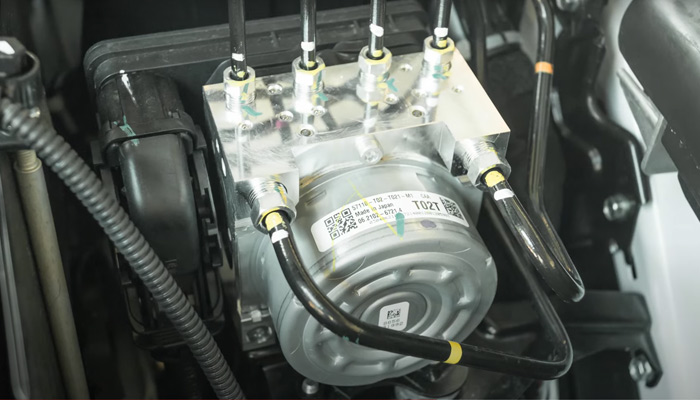
In some cases, though very rare, a failing or faulty ABS (anti-lock braking system) can also cause spongy brakes. The ABS prevents wheel lock-up during sudden stops and slippery road conditions.
If the module malfunctions, it can result in a loss of brake pressure. You will usually get the ABS warning light, but sometimes it might not show. It’s important to note that not all vehicles have ABS systems, so this may not apply to every car.
Solution:
If your car has ABS and the ABS warning light is on, have it diagnosed by a qualified mechanic? ABS systems can be complex. It requires proper diagnostic equipment to identify the specific problem.
The mechanic will perform a thorough inspection of the ABS components. That includes the sensors, control module, hydraulic unit, and wiring. They may use specialized diagnostic tools to retrieve error codes and conduct tests to pinpoint the cause.
The faulty ABS component may need repairing or replacing, depending on the diagnosis. This can involve replacing the entire thing or the faulty components only.
It’s crucial you use OEM parts or suitable replacements to ensure proper functioning.
Read Also: Can Worn Brake Pads Cause ABS Light to Come On?(Find Now)
Frequently Asked Questions (FAQs)
These are some of the most asked questions related to the topic:
Can A Failing Or Faulty Brake Booster Cause No Brake Pressure When A Car Is Running?
No! Not alone. Typically, the brake booster failing makes things hard for the driver. When it fails, the brake pedal becomes hard, increasing the braking distance. So, instead of allowing the brake pedal to fall to the floor, it is harder to reach the floor, an opposite symptom of low brake pressure.
Is It Safe To Drive With Low Brake Pressure Or When The Brake Pedal Goes To The Floor?
No. Low pressure or brake pedal going to the floor is a sign you have a brake issue that must be addressed immediately. If not fixed, it may escalate, and your brakes may fail completely.
Read Also: Do I Need to Pump The Brakes After Adding Brake Fluid?
Read Also: Why Does Brake Pedal Goes to Floor after Bleeding?(4 Causes)
Conclusion
When experiencing no brake pressure when the car is running, there are several potential causes and corresponding solutions. These include brake fluid leaks, pressure leaks, air in the brake system, and a failing or faulty ABS. To fix them, inspect and repair or replace the affected components.
Using high-quality replacement parts and refilling the brake fluid reservoir with the recommended type is essential. Additionally, bleeding the brake system may be necessary to remove trapped air. It is crucial to address these brake issues promptly to ensure driving safety.

Meet Zayan, the mechanical genius behind the highly acclaimed brakes problems and solutions website. With over a decade of hands-on experience in the automotive industry, Zayan has become a trusted authority in the realm of brake systems.
His passion for cars, coupled with his expertise in solving complex brake-related issues, has earned him a devoted following of car enthusiasts, mechanics, and everyday drivers seeking reliable guidance.
